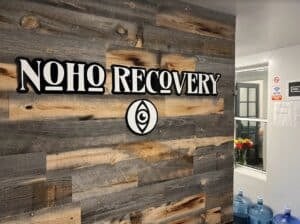Tianeptine Addiction And Abuse
- Antidepressant Addiction And Abuse
- Antidepressant Abuse Symptoms And Warning Signs
- Antidepressant Withdrawal And Detox
- Antidepressant Treatment And Rehab
- Cymbalta Addiction And Abuse
- Flexeril Addiction And Abuse
- Elavil Addiction And Abuse
- Remeron Addiction And Abuse
- Zoloft Addiction And Abuse
- Trazodone Addiction And Abuse
Understanding Tianeptine
As a result of high anxiety and depression rates, more substance use disorders have occurred starting in 2020. Some individuals battling new challenges from COVID-19 have began experimenting with drugs that would take the edge off, no matter how addictive. A new drug, Tianeptine, is surfacing during these times, causing concern for health officials. U.S. Tianeptine abuse has increased “24-fold” between 2014 and 2019. One of the drugs’ claims to fame is its ability to reduce anxiety, depression, pain, and fight Opioid-related addiction. Due to its antidepressant claims, it is used to treat depression in Asia, Europe, and some Latin American countries. It is often marketed as a dietary supplement or a nootropic (brain enhancing supplements) although it can be deadly when abused.
The Opioid Epidemic has claimed the lives of thousands of Americans. For a long time, many thought Opioids were the only threat to American families who have lost loved ones due to drugs like Heroin, Fentanyl, prescription Opioids, or Carfentanil. Furthermore, during the onset of the Coronavirus, anxiety and depression have increased. Much of this has resulted in increased substance abuse, increased rates of suicide, and increased drug overdoses, due to attempts to cope with and soothe mental health challenges. Between 2000 and 2017, the National Poison Data System reported 218 calls involving exposure to Tianeptine (also called Coaxil or Stablon).
Online Addiction Counseling
Get professional help from an online addiction and mental health counselor from BetterHelp.
- Access to Therapy 24/7
- Easy Online Scheduling
- 20,000+ Licensed Therapists
Paid Advertising. We may receive advertising fees if you follow links to the BetterHelp site.
How Tianeptine Works
According to Tianeptine.com, the drug is a, “neuroprotective antidepressant that reverses the neurological damage and lasting misery that stems from uncontrolled stress.” This means the drug is able to offset the characteristics of depression and anxiety by boosting the mood and creating euphoric feelings. Although the drug is legal in some other countries, it has not been FDA approved for use in the U.S. Despite this, much research continues to occur as the FDA monitors the use of the drug.
Tianeptine is distributed in 25 to 50 mg per dose to be effective and is best taken orally, although it is available intravenously. It works by increasing the brain’s serotonin uptake, to lower stress levels and promote better moods when taken in low dosages. Additionally, it functions to assist anxiety and depressive disorders by producing mood-boosting dopamine by activating the brain’s Opioid receptors. Interestingly enough, the dopamine effect of the drug has been comparable to kratom and some Opioids, hence its poor reputation in the states.
Looking for a place to start?
Join the thousands of people that have called a treatment provider for rehab information.
Free and confidential
Available 24/7
Access to professional treatment
Tianeptine Risks And Side Effects
Sometimes referred to as Tianna, Tianeptine sodium powder, Tianna Green, Tianna Red, Tianna White, and Tianeptine sulfate, the drug is considered highly addictive by the FDA. Recent stories of Tianeptine use have caused health professionals to examine addictive properties of the drug and its potential for harm. Not only does long-term use of the drug create withdrawal effects, but it can open the door to someone seeking other Opioids or Opioid-like substances.
Individuals who have taken the drug have combined it with other drugs. A Centers for Disease Control and Prevention (CDC) report noted individuals battling side effects of Tianeptine combined the drug with alcohol, Opioids, Benzodiazepines, or Phenibut. When the drug is mixed with other drugs, overdoses are more likely, along with other health complications. Secondly, Tianeptine could produce the same effects of Opioid addiction as one develops a tolerance or dependence. As a result, when one exceeds the recommended Tianeptine dose or develops a tolerance, he or she can experience Opioid-like addiction, side effects, and withdrawals. Reported side effects of Tianeptine are still being evaluated. So far, side effects range from, but are not limited to:
-
Irritable bowel syndrome
-
Stomach aches
-
Developing a tolerance
-
Developing a dependence
-
Tianeptine withdrawal
-
Overdose (particularly if combined with other substances)
-
Drowsiness
-
Coma
-
Confusion
-
Death
In addition to the above side effects, cardiovascular, neurological, and respiratory symptoms have been reported as side effects. Because withdrawal is likely to occur due to long-term use or frequent high dosages, going cold turkey or self-tapering may not be as successful compared to getting detox or tapering in a medical facility. If you or a loved one needs rehab-related help, contact a treatment provider to explore available options.

Break free from addiction.
You have options. Talk about them with a treatment provider today.
Tianeptine Withdrawal And Signs Of Abuse
Tianeptine produces a variety of withdrawal symptoms. The severity of withdrawal will vary based on the time of ingestion, the frequency, dosage, and whether or not other substances have been involved. Typical withdrawal symptoms include:
-
Anxiety
-
Appetite loss
-
Yawning
-
Vomiting
-
Fever
-
Confusion
-
Cramps
-
Depression
-
Dizziness
-
Headaches
-
Flu-like symptoms
-
Insomnia
-
Moodiness
-
Suicidal ideation
-
Tremors
-
Diarrhea
Signs of Tianeptine abuse can occur when: someone can’t taper off use, needs more to feel normal, combines it with other drugs (especially to help with mental health disorders), experiences withdrawals, or has a tolerance.
Ready To Get Help?
Facing a Tianeptine use disorder doesn’t have to be a shameful and lonely experience. If you or a loved one need rehab-related help, don’t hesitate to contact a treatment provider free of charge for information on treatment. You can receive information on quality care, detox medications, and facility arrangements.
Published:
Author
Krystina Murray

-
Krystina Murray has received a B.A. in English at Georgia State University, has over 5 years of professional writing and editing experience, and over 15 years of overall writing experience. She enjoys traveling, fitness, crafting, and spreading awareness of addiction recovery to help people transform their lives.
- More from Krystina Murray
Reviewed by Certified Addiction Professional:
David Hampton

A survivor of addiction himself, David Hampton is a Certified Professional Recovery Coach (CPRC) and a member of the National Association of Alcohol and Drug Abuse Counselors (NAADAC).
- More from David Hampton
Sources


Recovery Starts Today
Call Now For Addiction Support



Newport Academy – Teen Rehab Center
Port Townsend , WA


Sequoia Detox Centers
Spokane Valley , WA



Moonlight Mountain Recovery – Nampa
Nampa , ID

Bayside Marin Treatment Center
San Rafael , CA

Newport Institute for Young Adults
Sunol , CA

The Camp Recovery Center
Scotts Valley , CA

Moonlight Mountain Recovery
Pocatello , ID


Tarzana Recovery Center – TRC
Tarzana , CA

